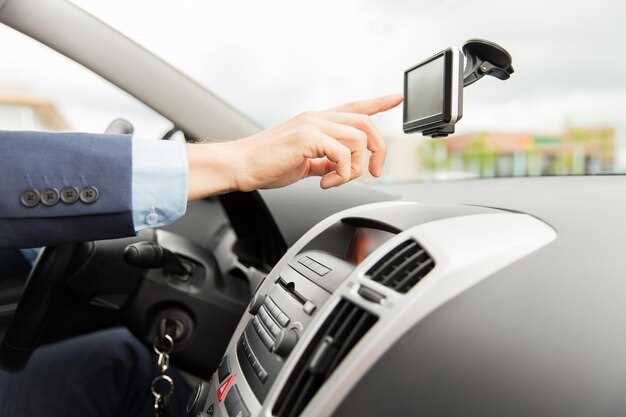
How to choose the best dash cam for your car

In an era where road safety has become more paramount than ever, equipping your vehicle with a quality dash cam can serve as a crucial step towards enhanced protection. These compact cameras not only capture footage of your journeys but also act as an important tool in accident scenarios and disputes. With numerous options available in the market, selecting the best dash cam for your car requires a thorough understanding of your specific needs and preferences.
When considering a dash cam, it’s vital to emphasize its role in promoting safety on the road. A dependable camera can provide invaluable evidence in the event of a collision, ensuring that you have documented proof of what transpired. This can be instrumental in settling insurance claims and protecting yourself from fraudulent claims. Therefore, investing in a reliable dash cam is not just a tech-savvy decision; it’s a wise move toward safeguarding your rights as a driver.
This guide will explore key features to look for when choosing the ideal dash cam for your car, including video quality, ease of installation, and additional functionalities. Understanding these aspects will empower you to make an informed choice that best meets your driving habits and enhances your overall safety on the road.
Key Features to Consider When Selecting a Dash Cam
When choosing a dash cam for your car, several key features can significantly enhance your driving safety and overall experience. Understanding these features helps you make an informed decision tailored to your specific needs.
Video Quality: The resolution of the video is paramount. Look for a dash cam that offers at least 1080p full HD recording. Higher resolutions, such as 1440p or 4K, provide clearer images, which can be crucial in capturing details like license plates and road signs during incidents.
Field of View: The field of view (FOV) indicates how much area the camera can record. A wider FOV, typically around 140 to 180 degrees, can capture more surroundings, ensuring that you have a comprehensive view of the road and potential hazards.
Night Vision: Poor lighting conditions can hinder visibility, making night vision a valuable feature. Look for dash cams equipped with infrared LEDs or advanced low-light technology to ensure clear footage in darkness.
Storage Options: Dash cams require a storage medium for recording video. Consider models that support microSD cards with adequate storage capacity, typically at least 32GB, and check if they offer loop recording to automatically overwrite older footage.
G-Sensor: A built-in G-sensor detects sudden acceleration, braking, or collisions and automatically locks the footage, preventing it from being overwritten. This feature is critical for preserving evidence in case of an accident.
Wi-Fi and Smartphone Connectivity: Some dash cams come with Wi-Fi capabilities. This allows you to connect your device to a smartphone app for easy video retrieval and sharing. Such connectivity can enhance usability, making it easier to access footage when needed.
Ease of Installation: Consider how easily the dash cam can be installed in your car. Suction mounts and adhesive mounts are common, but a model that offers simple installation will save you time and effort.
Build Quality and Design: A durable and compact design can ensure longevity and minimize distractions while driving. Look for cameras with a sturdy build that can withstand changing weather conditions.
Choosing the right features tailored to your needs will ultimately improve your driving safety and provide peace of mind on the road. Invest wisely in a dash cam that delivers not only in performance but also in reliability.
Understanding Dash Cam Resolution and Night Vision Capabilities

When selecting a dash cam for your car, understanding the resolution is crucial for ensuring your safety on the road. Resolution determines the clarity of the video recorded, impacting your ability to capture important details such as license plates and road signs. Most dash cams come in various resolutions including HD (720p), Full HD (1080p), and even 4K (2160p). Higher resolution cameras provide crisper images, which can be invaluable in the event of an incident.
A Full HD (1080p) dash cam is generally sufficient for everyday driving, capturing clear footage during daylight. However, if you desire enhanced detail, especially during high-speed situations, consider a 4K model. While these cameras are typically more expensive, they offer superior performance and detail.
Equally important is the night vision capability of the dash cam. Night vision technology allows your car cam to record clear footage in low-light conditions, which can be vital when incidents occur after dark. Dash cams equipped with infrared sensors or advanced low-light performance features can significantly improve nighttime recording quality. These technologies enhance the visibility of critical details such as surroundings and other vehicles, thereby ensuring that you have reliable footage regardless of the time of day.
When considering a dash cam, pay attention to both resolution and night vision capabilities to safeguard your safety on the road. High-quality video can provide essential support in case of disputes, accidents, or insurance claims, making these features integral to effective car safety.
How to Install and Maintain Your Dash Cam for Optimal Performance

Installing and maintaining your dash cam correctly ensures optimal performance and enhances safety on the road. Follow these steps to achieve the best results.
Installation Steps
- Choose the Right Location:
- Mount your dash cam behind the rearview mirror.
- Avoid obstructing the driver’s line of sight.
- Securely Attach the Mount:
- Clean the windshield area with alcohol wipes.
- Use a high-quality adhesive mount to ensure stability.
- Connect Power:
- Use the car charger provided with the dash cam.
- Route the power cable along the headliner for a neat appearance.
- Adjust the Angle:
- Ensure the camera captures a clear view of the road ahead.
- Check for any obstructions in the frame.
Maintenance Tips
- Regularly Check the Lens:
- Wipe the lens with a microfiber cloth to remove dust and smudges.
- Ensure the lens is clear for optimum video quality.
- Update Firmware:
- Periodically check for firmware updates from the manufacturer.
- Follow the instructions provided to enhance functionality.
- Manage Storage:
- Regularly format the SD card to prevent file corruption.
- Replace the SD card as needed to maintain recording quality.
- Check Connections:
- Ensure that all cables are securely connected and in good condition.
- Inspect for any signs of damage or wear.
By following these installation and maintenance guidelines, you can ensure that your dash cam performs optimally and contributes to your safety while driving. Regular upkeep will help you capture critical moments on the road without interruptions.